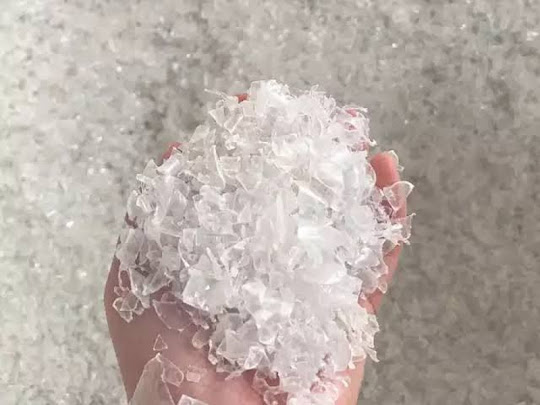From Waste to Wealth: How PET Bottle Flakes Are Powering the Circular Economy in 2025
Sustainability is no longer a trend; it’s a necessity. As climate change, resource scarcity, and pollution continue to challenge societies, the circular economy has become a powerful solution. This transformation happened due to an unexpected champion: PET bottle flakes. These tiny fragments of recycled plastic bottles are now driving innovation, reducing waste, and creating new economic opportunities across industries.
The Circular Economy: A New Way Forward
The circular economy is a regenerative system that aims to keep products, materials, and resources in use for as long as possible. Unlike the traditional linear model of “take, make, dispose,” the circular economy focuses on designing out waste, reusing materials, and regenerating natural systems.
In this model, PET bottle flakes play a crucial role. Derived from post-consumer PET (polyethylene terephthalate) bottles, these flakes are processed and reused in various applications, thereby reducing the need for virgin plastic and minimizing environmental impact. Their versatility and scalability make them a crucial element of circular manufacturing.
What Are PET Bottle Flakes?
PET bottle flakes are small, cleaned, and shredded pieces of PET plastic bottles. The process of creating these flakes involves several steps:
1. Collection: Used PET bottles are gathered from households, businesses, and public spaces.
2. Sorting: Bottles are sorted by color and material to ensure purity.
3. Washing: Labels, caps, and residues are removed through hot and cold washing.
4. Shredding: Bottles are cut into small flakes.
5. Drying: Moisture is removed to prepare the flakes for reuse.
Once processed, these flakes become a valuable raw material for industries ranging from textiles to packaging, helping close the loop in the plastic lifecycle.
Industries Benefiting from PET Bottle Flakes:
The applications of PET bottle flakes are diverse and continue to grow rapidly. Here’s how different sectors are using their potential:
Textile industry:
- Recycled PET flakes are spun into polyester yarn.
- Used in clothing, sportswear, footwear, and home furnishings.
- Brands now market products as “made from recycled bottles,” appealing to eco-conscious consumers.
Packaging sector:
- Flakes are remoulded into new bottles, containers, and food-grade packaging.
- Supports closed-loop recycling systems, reducing dependency on virgin plastic.
- Enhances brand reputation through sustainable packaging initiatives.
Automotive and construction:
- Used in insulation materials, carpets, and interior components.
- Improves durability while promoting environmental responsibility.
- Reduces the carbon footprint of large-scale infrastructure projects.
Environmental impact: A sustainable solution
The environmental benefits of using PET bottle flakes are significant:
- Reduced carbon emissions: Recycling PET consumes less energy than producing new plastic.
- Less landfill waste: Millions of bottles are diverted from landfills and oceans.
- Resource conservation: Saves petroleum and water used in the production of virgin plastic.
- Lower pollution levels: Minimizes microplastic pollution and toxic emissions.
In 2025, many governments have implemented policies that encourage the use of recycled materials, with PET flakes leading the charge in sustainable innovation.
Economic value: Turning trash into treasure
Beyond environmental benefits, PET bottle flakes are creating new economic opportunities:
- Job creation: Recycling plants, collection centres, and processing units employ thousands of workers.
- Entrepreneurship: Startups are developing innovative products using PET flakes, from fashion accessories to building materials.
- Export potential: Countries with advanced recycling infrastructure export flakes to regions lacking processing capabilities.
- Cost efficiency: Recycled PET is often more cost-effective than virgin plastic, making it an attractive option for manufacturers.
Governments and private enterprises are investing in recycling technologies, recognizing PET flakes as a profitable and sustainable commodity.
Innovations in PET recycling
2025 has seen remarkable advancements in how PET bottle flakes are processed and utilized:
- AI-powered sorting systems: Improve the accuracy and efficiency of material separation.
- Chemical recycling technologies: Break down PET to its molecular level for high-quality reuse.
- Blockchain-based tracking: Ensures transparency and traceability in the recycling supply chain.
- Decentralized recycling units: Enable local communities to process PET waste independently.
These innovations are making PET recycling more scalable, accessible, and economically viable across the globe.
Conclusion: A Future Built on Flakes
In 2025, PET bottle flakes are more than just recycled plastic; they represent a shift in mindset, a commitment to sustainability, and a way of economic strength. As circular economy models gain momentum globally, these humble flakes are proving that waste can be a resource and that environmental responsibility can coexist with profitability. From fashion runways to factory floors, PET flakes are powering a cleaner, greener future. And the journey begins with a simple act: recycling your bottle.

.jpg)
.jpg)

Comments
Post a Comment